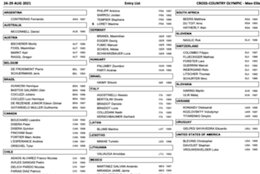Welcome to the future of ESG Reporting and Management with SAP Sustainability Control Tower! This blog post will explore the latest developments in the SAP Sustainability Control Tower and emphasize its crucial role in advancing your Environmental, Social, and Governance (ESG) agenda.
Positioned at the forefront of sustainability solutions, SAP Sustainability Control Tower is an ERP-centric, cloud-based platform designed to seamlessly integrate with SAP S/4HANA Cloud and other SAP solutions, including SAP Datasphere, SAP EHS Management, SAP Sustainability Footprint Management and SAP Analytics Cloud. These integration capabilities ensure sustainability is embedded into core business processes, providing automated, auditable, and compliant reporting for ESG data.
Leveraging AI-driven features, the platform also automates the generation of comprehensive ESG reports and enables businesses to make informed decisions.
With a strategic focus on expanding regulatory coverage and facilitating integration across solutions, SAP Sustainability Control Tower empowers organizations to achieve their sustainability goals while gaining a competitive advantage in the market.
The following features play a central role in the reporting capabilities solution. Initially, the ESG Data Foundation within the SAP Sustainability Control Tower offers a predefined data model designed to comply with regulatory standards by using pre-built and custom-built sustainability metrics. The solution is transitioning from supporting voluntary reports such as World Economic Forum (WEF) metrics to adopting ESRS and EU Taxonomy, which can also support customers who are starting to address SEC regulations and ISSB standards. Concurrently, this data foundation can also be used for Corporate Carbon Footprint (CCF) calculation and GHG reporting.
Stay tuned as we explore the key features and benefits of the SAP Sustainability Control Tower:
Carbon Management Features of SAP SCTGenerate ESG Reports with AIDisclosure Management StrategyData Foundation and ExtensibilityMetric ManagementAuditabilitySAP Continuous Influence ProgramPlanned Feature UpdatesFurther Assets
Carbon Management Features of SAP SCT
As of June 2024, SCT’s corporate carbon management capabilities enable you to accurately calculate both direct and indirect emissions, ensuring compliance and aiding in decarbonization efforts across your operations and supply chains. You can efficiently manage data collection across organizational boundaries and track the completion of collection tasks.
Our solution allows for the calculation of all categories of corporate emissions, including scope 1, 2, and all sub-categories of scope 3. It supports large-scale calculations based on spending and activities. Additionally, you can leverage an emissions factors library, which includes pre-delivered EPA content. Notably, corporate carbon footprint calculations are a built-in feature of SCT, requiring no additional products or licenses.
With the new Corrective Bookings feature, you can now correct past emissions records within the Emissions DPI. Each correction is fully traceable, displaying the original data alongside the corrected values and the period of correction. This ensures transparency and compliance for auditing purposes.
Generate ESG Reports with AI
As of August 2024, you can generate draft reports for periodic internal or external ESG reporting, based on the ESG data available in the SAP Sustainability Control Tower.
The “Generate ESG Reports with AI” functionality utilizes best-practice templates, generative AI text, and metrics calculated in SAP SCT using the OpenAI GPT 4 model via the SAP AI core service.
In the first version, users can choose from pre-defined SAP templates. With the planned deliveries in Q4/2024, they will soon be able to edit the templates based on their requirements. Draft reports can be distributed within the organization for reviews, collaboration, and adaptive iterations.
Disclosure Management Strategy
Due to the CSRD disclosure requirements, companies have to also report on how sustainability issues affect their business and the impact of their activities on people and the environment. These requirements are detailed in the European Sustainability Reporting Standards (ESRS), which require a formal disclosure and exchange of disclosure documents via XBRL format with the authorities.
SAP Sustainability Control Tower aggregates, plans, calculates and steers ESG factors and goals. Across the world, companies strive to improve their environmental, social, and governance (ESG) metrics and disclose them combined with financial data in their integrated reports. SAP SCT can distribute relevant data into existing disclosure management tools (SAP or non-SAP) to generate integrated reporting.
Our ambition is to share the ESG metrics available in SAP SCT with disclosure management software to enable the creation, validation, and filing or disclosure of regulatory reports in Word, XBRL, and iXBRL formats, including ESRS.
Therefore, Thomson Reuters will launch an ESG Disclosure Management app (target availability in Q1/2025), which extends SAP Sustainability Control Tower (SAP SCT) to enable customers with a software solution to simplify their ESG reporting and filing needs. This app will integrate SAP SCT with Thomson Reuters’ ONESOURCE Statutory Reporting (TR OSR) to provide customers with last-mile reporting functionality based on the SAP SCT data foundation.
Moreover, the upcoming release of SAP Disclosure Management (target availability in Q4/2024) we release SCT data source connection to seamlessly integrate ESG data between the two solutions to save time and ensure ESG data consistency for existing customers.
Data Foundation and Extensibility
As we continue to evolve the SAP Sustainability Control Tower, a key focus is enhancing the extensibility of the ESG Data Foundation. This allows organizations to tailor the platform to their unique sustainability reporting needs, ensuring comprehensive and accurate ESG data management.
We are pleased to introduce a new custom metric type: Standard Custom Metrics. This feature allows you to define calculations directly within the Manage Metrics app and perform them in the Manage ESG Data app, using methods such as sum, division, and weighted division.
With this enhancement, we have updated the names of existing custom metrics to better reflect their functionalities:
Basic Metric is now Basic Custom Metric: Create and configure your metric in the Manage Metrics app without requiring measures for the calculation. There is no change in functionality.Advanced Metric is now Legacy Advanced Custom Metric: Metrics and calculation methods previously defined in the Manage Metrics app and calculated in CPE. No new metrics of this type can be created.Standard Custom Metric: Newly introduced, allowing you to define your calculation methodology directly in the Manage Metrics app and calculate in the Manage ESG Data app.
These changes enhance the flexibility and precision of your sustainability metrics, enabling more tailored reporting and analysis.
To streamline your data import processes, you can now import data for Basic Custom Metrics directly using CSV files in the Custom Metrics – Actuals tab of the Manage ESG Data app. Templates are readily available within the app to guide you through the process. This update eliminates the need for the CPE environment for this function, ensuring a more efficient workflow without affecting your existing data.
As of October 2024, we’ve expanded the import and export capabilities to include custom metrics alongside custom measures and dimensions. This functionality is available within the Manage Metrics, Manage Measures, and Manage Custom Dimensions apps. You can now export a set of custom objects and import them into another tenant, facilitating easier data transfer and system setup across different environments. For a comprehensive guide on this process, refer to Exporting and Importing Custom Objects.
To facilitate data import processes, you can now use Microsoft Excel (XLSX/XLS) files in addition to CSV files when importing data in the Manage Master Data and Manage ESG Data apps. The system automatically adapts to typical date formats in Excel files, enhancing ease of use and reducing data formatting issues.
To offer greater customization, dimensions with SAP-provided values now have either Read Only or Active status in the Manage Master Data app. You can add new values to dimensions with Active status, allowing you to seamlessly combine SAP-provided and custom values without creating entirely new custom dimensions.
For example, if the “Contract Type” dimension has four default SAP-provided values and you require an additional value, you can simply add it to the existing dimension. This streamlined approach simplifies dimension management and enhances data consistency.
You can import new master data values via file import or use the new Edit function within the Manage Master Data app.
Metric Management
Simplified Creation of Standard Custom Metrics
Defining your calculation methods is now more straightforward. With the Manage Metrics app, you can create Standard Custom Metrics and define your calculation methodology directly within the app, choosing from sum, division, and weighted division methods. This eliminates the need for external calculations and streamlines the metric creation process for many additional metrics ESG standards require.
Assurance Information Configuration
You can now configure the disclosure type, applicable reporting standards, set materiality, and specify the assurance level for each metric in the new Assurance section. This enhancement allows for more detailed reporting and better alignment with regulatory requirements.
Auditability
In October, the “View Change Logs” application was released, designed to enhance transparency and compliance with regulatory obligations. This feature allows users to track and review changes across various data categories, including metrics, custom measures, dimensions, and activity data for measures. Users can log all key change types—Create, Update, and Delete—along with old and new values, making it easier to monitor data integrity. This functionality is particularly critical for meeting stringent regulatory requirements. For more information, see Using the View Change Logs Application.
SAP Continuous Influence Program
At SAP, customer feedback is at the heart of our innovation process. With the SAP Continuous Influence program, you have the opportunity to directly impact the future development of SAP products and services. By sharing your ideas, needs, and priorities, you can help shape the direction of our solutions and ensure they meet your business needs.
We are excited to announce the launch of our new SAP Influence page for our Sustainability solutions: SFM (Sustainability Footprint Management), SCT (Sustainability Control Tower), and RDP (Responsible Design and Production). These solutions cover key sustainability topics like ESG-related disclosure, Material Transition, and Carbon Management. This dedicated platform allows you, as a customer or partner, to submit feature requests, vote on others’ ideas, and receive timely feedback from SAP.
Check out the session at https://influence.sap.com/go/sustainability and start making your voice heard!
Planned Feature Updates
We continue to innovate and expand the capabilities of SAP Sustainability Control Tower. Here are some planned features expected in early Q1:
We plan to introduce the ability to create qualitative metrics and collect textual information for selected time periods. This includes support for narrative text and simple questions, allowing you to describe actions and policies. You can assign disclosure references and assurance information in the same way as for quantitative metrics, enhancing the depth of your sustainability reporting. A new application, Analyze ESG Data to be developed, allowing customers and partners to use advanced filtering capabilities for KPI tiles by time-period and hierarchy. You’ll be able to cluster and group KPI tiles by subject matter, frameworks, or any user-defined groups, and personalize custom views. This will help you track the performance of your ESG metrics and group them by strategic priorities.We plan to introduce custom authorization policies that allow you to limit user access to transactional data for specified measures and metrics across various applications. This will enhance data security by preventing unauthorized access to sensitive information, such as financial or HR records.The Manage Metrics app will include new classification fields to better describe the qualities of sustainability metrics. This includes Reporting Standard Version, Disclosure Requirement, and Disclosure References. This improvement will enhance data auditability and compliance alignment.
Further Assets
Product Feature Videos and RoadmapCustomer StoriesCSRD Whitepaper
Disclaimer:
This blog post, or any related document and SAP’s strategy and possible future developments, products and or platforms directions and functionality are all subject to change and may be changed by SAP at any time for any reason without notice.
Welcome to the future of ESG Reporting and Management with SAP Sustainability Control Tower! This blog post will explore the latest developments in the SAP Sustainability Control Tower and emphasize its crucial role in advancing your Environmental, Social, and Governance (ESG) agenda.Positioned at the forefront of sustainability solutions, SAP Sustainability Control Tower is an ERP-centric, cloud-based platform designed to seamlessly integrate with SAP S/4HANA Cloud and other SAP solutions, including SAP Datasphere, SAP EHS Management, SAP Sustainability Footprint Management and SAP Analytics Cloud. These integration capabilities ensure sustainability is embedded into core business processes, providing automated, auditable, and compliant reporting for ESG data. Leveraging AI-driven features, the platform also automates the generation of comprehensive ESG reports and enables businesses to make informed decisions. With a strategic focus on expanding regulatory coverage and facilitating integration across solutions, SAP Sustainability Control Tower empowers organizations to achieve their sustainability goals while gaining a competitive advantage in the market.The following features play a central role in the reporting capabilities solution. Initially, the ESG Data Foundation within the SAP Sustainability Control Tower offers a predefined data model designed to comply with regulatory standards by using pre-built and custom-built sustainability metrics. The solution is transitioning from supporting voluntary reports such as World Economic Forum (WEF) metrics to adopting ESRS and EU Taxonomy, which can also support customers who are starting to address SEC regulations and ISSB standards. Concurrently, this data foundation can also be used for Corporate Carbon Footprint (CCF) calculation and GHG reporting. Stay tuned as we explore the key features and benefits of the SAP Sustainability Control Tower:Carbon Management Features of SAP SCTGenerate ESG Reports with AIDisclosure Management StrategyData Foundation and ExtensibilityMetric ManagementAuditabilitySAP Continuous Influence ProgramPlanned Feature UpdatesFurther Assets Carbon Management Features of SAP SCTAs of June 2024, SCT’s corporate carbon management capabilities enable you to accurately calculate both direct and indirect emissions, ensuring compliance and aiding in decarbonization efforts across your operations and supply chains. You can efficiently manage data collection across organizational boundaries and track the completion of collection tasks. Our solution allows for the calculation of all categories of corporate emissions, including scope 1, 2, and all sub-categories of scope 3. It supports large-scale calculations based on spending and activities. Additionally, you can leverage an emissions factors library, which includes pre-delivered EPA content. Notably, corporate carbon footprint calculations are a built-in feature of SCT, requiring no additional products or licenses.With the new Corrective Bookings feature, you can now correct past emissions records within the Emissions DPI. Each correction is fully traceable, displaying the original data alongside the corrected values and the period of correction. This ensures transparency and compliance for auditing purposes. Generate ESG Reports with AIAs of August 2024, you can generate draft reports for periodic internal or external ESG reporting, based on the ESG data available in the SAP Sustainability Control Tower. The “Generate ESG Reports with AI” functionality utilizes best-practice templates, generative AI text, and metrics calculated in SAP SCT using the OpenAI GPT 4 model via the SAP AI core service. In the first version, users can choose from pre-defined SAP templates. With the planned deliveries in Q4/2024, they will soon be able to edit the templates based on their requirements. Draft reports can be distributed within the organization for reviews, collaboration, and adaptive iterations. Disclosure Management StrategyDue to the CSRD disclosure requirements, companies have to also report on how sustainability issues affect their business and the impact of their activities on people and the environment. These requirements are detailed in the European Sustainability Reporting Standards (ESRS), which require a formal disclosure and exchange of disclosure documents via XBRL format with the authorities.SAP Sustainability Control Tower aggregates, plans, calculates and steers ESG factors and goals. Across the world, companies strive to improve their environmental, social, and governance (ESG) metrics and disclose them combined with financial data in their integrated reports. SAP SCT can distribute relevant data into existing disclosure management tools (SAP or non-SAP) to generate integrated reporting. Our ambition is to share the ESG metrics available in SAP SCT with disclosure management software to enable the creation, validation, and filing or disclosure of regulatory reports in Word, XBRL, and iXBRL formats, including ESRS. Therefore, Thomson Reuters will launch an ESG Disclosure Management app (target availability in Q1/2025), which extends SAP Sustainability Control Tower (SAP SCT) to enable customers with a software solution to simplify their ESG reporting and filing needs. This app will integrate SAP SCT with Thomson Reuters’ ONESOURCE Statutory Reporting (TR OSR) to provide customers with last-mile reporting functionality based on the SAP SCT data foundation.Moreover, the upcoming release of SAP Disclosure Management (target availability in Q4/2024) we release SCT data source connection to seamlessly integrate ESG data between the two solutions to save time and ensure ESG data consistency for existing customers. Data Foundation and ExtensibilityAs we continue to evolve the SAP Sustainability Control Tower, a key focus is enhancing the extensibility of the ESG Data Foundation. This allows organizations to tailor the platform to their unique sustainability reporting needs, ensuring comprehensive and accurate ESG data management.We are pleased to introduce a new custom metric type: Standard Custom Metrics. This feature allows you to define calculations directly within the Manage Metrics app and perform them in the Manage ESG Data app, using methods such as sum, division, and weighted division.With this enhancement, we have updated the names of existing custom metrics to better reflect their functionalities:Basic Metric is now Basic Custom Metric: Create and configure your metric in the Manage Metrics app without requiring measures for the calculation. There is no change in functionality.Advanced Metric is now Legacy Advanced Custom Metric: Metrics and calculation methods previously defined in the Manage Metrics app and calculated in CPE. No new metrics of this type can be created.Standard Custom Metric: Newly introduced, allowing you to define your calculation methodology directly in the Manage Metrics app and calculate in the Manage ESG Data app.These changes enhance the flexibility and precision of your sustainability metrics, enabling more tailored reporting and analysis.To streamline your data import processes, you can now import data for Basic Custom Metrics directly using CSV files in the Custom Metrics – Actuals tab of the Manage ESG Data app. Templates are readily available within the app to guide you through the process. This update eliminates the need for the CPE environment for this function, ensuring a more efficient workflow without affecting your existing data.As of October 2024, we’ve expanded the import and export capabilities to include custom metrics alongside custom measures and dimensions. This functionality is available within the Manage Metrics, Manage Measures, and Manage Custom Dimensions apps. You can now export a set of custom objects and import them into another tenant, facilitating easier data transfer and system setup across different environments. For a comprehensive guide on this process, refer to Exporting and Importing Custom Objects.To facilitate data import processes, you can now use Microsoft Excel (XLSX/XLS) files in addition to CSV files when importing data in the Manage Master Data and Manage ESG Data apps. The system automatically adapts to typical date formats in Excel files, enhancing ease of use and reducing data formatting issues.To offer greater customization, dimensions with SAP-provided values now have either Read Only or Active status in the Manage Master Data app. You can add new values to dimensions with Active status, allowing you to seamlessly combine SAP-provided and custom values without creating entirely new custom dimensions.For example, if the “Contract Type” dimension has four default SAP-provided values and you require an additional value, you can simply add it to the existing dimension. This streamlined approach simplifies dimension management and enhances data consistency.You can import new master data values via file import or use the new Edit function within the Manage Master Data app. Metric ManagementSimplified Creation of Standard Custom Metrics Defining your calculation methods is now more straightforward. With the Manage Metrics app, you can create Standard Custom Metrics and define your calculation methodology directly within the app, choosing from sum, division, and weighted division methods. This eliminates the need for external calculations and streamlines the metric creation process for many additional metrics ESG standards require.Assurance Information Configuration You can now configure the disclosure type, applicable reporting standards, set materiality, and specify the assurance level for each metric in the new Assurance section. This enhancement allows for more detailed reporting and better alignment with regulatory requirements. AuditabilityIn October, the “View Change Logs” application was released, designed to enhance transparency and compliance with regulatory obligations. This feature allows users to track and review changes across various data categories, including metrics, custom measures, dimensions, and activity data for measures. Users can log all key change types—Create, Update, and Delete—along with old and new values, making it easier to monitor data integrity. This functionality is particularly critical for meeting stringent regulatory requirements. For more information, see Using the View Change Logs Application. SAP Continuous Influence ProgramAt SAP, customer feedback is at the heart of our innovation process. With the SAP Continuous Influence program, you have the opportunity to directly impact the future development of SAP products and services. By sharing your ideas, needs, and priorities, you can help shape the direction of our solutions and ensure they meet your business needs.We are excited to announce the launch of our new SAP Influence page for our Sustainability solutions: SFM (Sustainability Footprint Management), SCT (Sustainability Control Tower), and RDP (Responsible Design and Production). These solutions cover key sustainability topics like ESG-related disclosure, Material Transition, and Carbon Management. This dedicated platform allows you, as a customer or partner, to submit feature requests, vote on others’ ideas, and receive timely feedback from SAP.Check out the session at https://influence.sap.com/go/sustainability and start making your voice heard! Planned Feature UpdatesWe continue to innovate and expand the capabilities of SAP Sustainability Control Tower. Here are some planned features expected in early Q1:We plan to introduce the ability to create qualitative metrics and collect textual information for selected time periods. This includes support for narrative text and simple questions, allowing you to describe actions and policies. You can assign disclosure references and assurance information in the same way as for quantitative metrics, enhancing the depth of your sustainability reporting. A new application, Analyze ESG Data to be developed, allowing customers and partners to use advanced filtering capabilities for KPI tiles by time-period and hierarchy. You’ll be able to cluster and group KPI tiles by subject matter, frameworks, or any user-defined groups, and personalize custom views. This will help you track the performance of your ESG metrics and group them by strategic priorities.We plan to introduce custom authorization policies that allow you to limit user access to transactional data for specified measures and metrics across various applications. This will enhance data security by preventing unauthorized access to sensitive information, such as financial or HR records.The Manage Metrics app will include new classification fields to better describe the qualities of sustainability metrics. This includes Reporting Standard Version, Disclosure Requirement, and Disclosure References. This improvement will enhance data auditability and compliance alignment. Further AssetsProduct Feature Videos and RoadmapCustomer StoriesCSRD Whitepaper Disclaimer:This blog post, or any related document and SAP’s strategy and possible future developments, products and or platforms directions and functionality are all subject to change and may be changed by SAP at any time for any reason without notice. Read More Technology Blogs by SAP articles
#SAP
#SAPTechnologyblog











